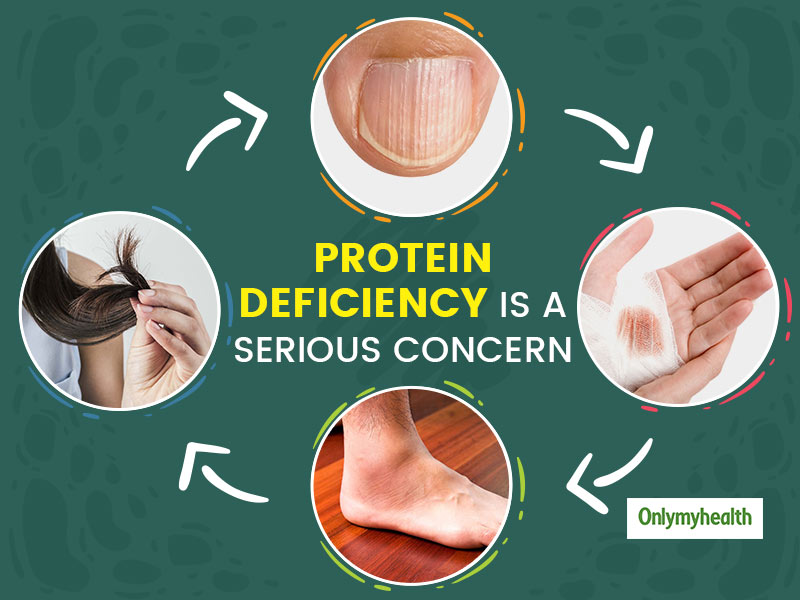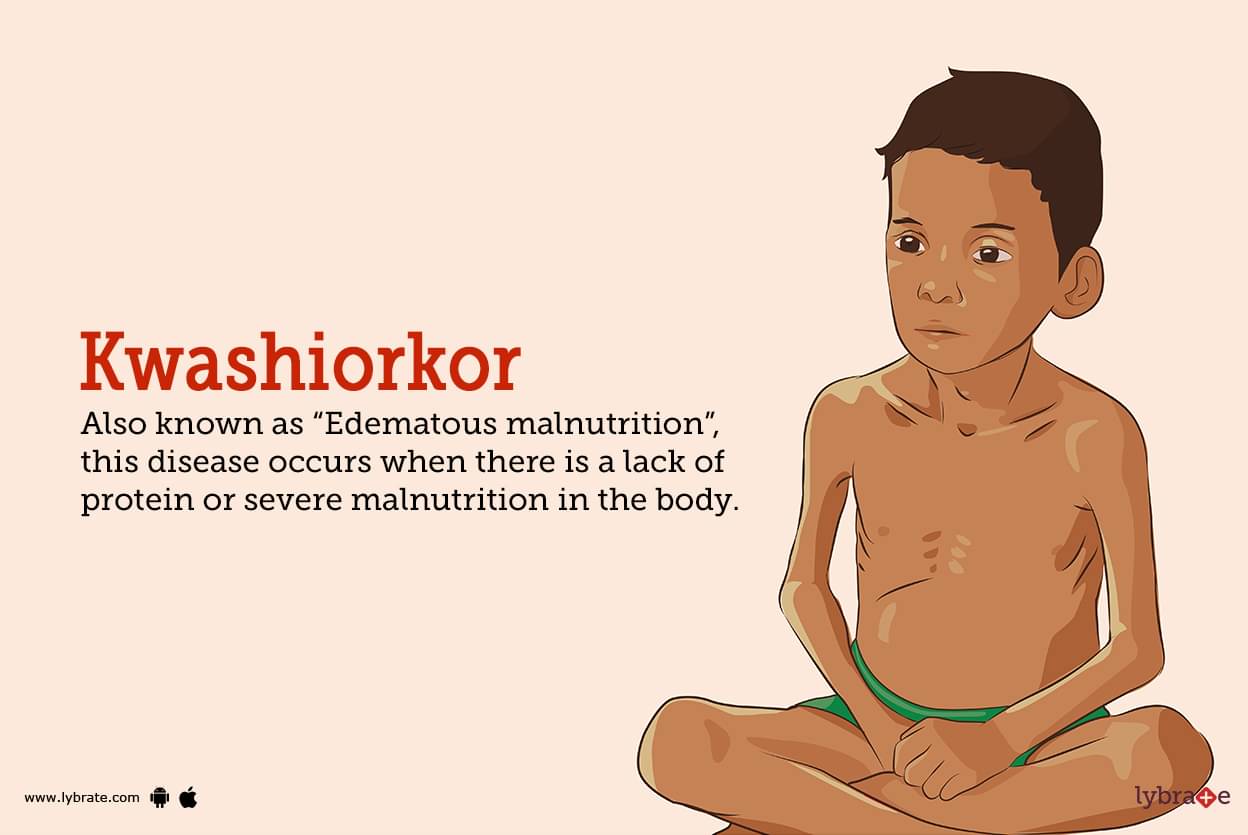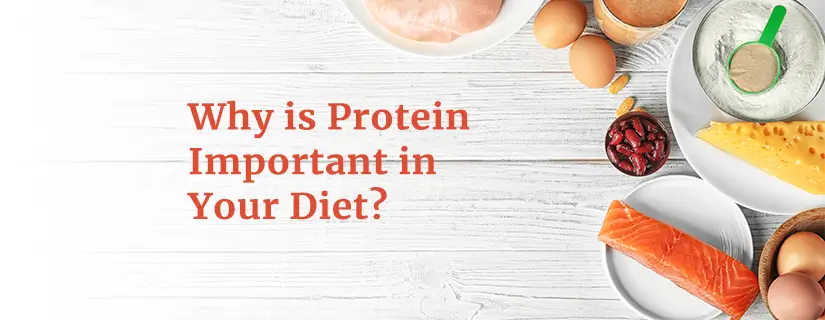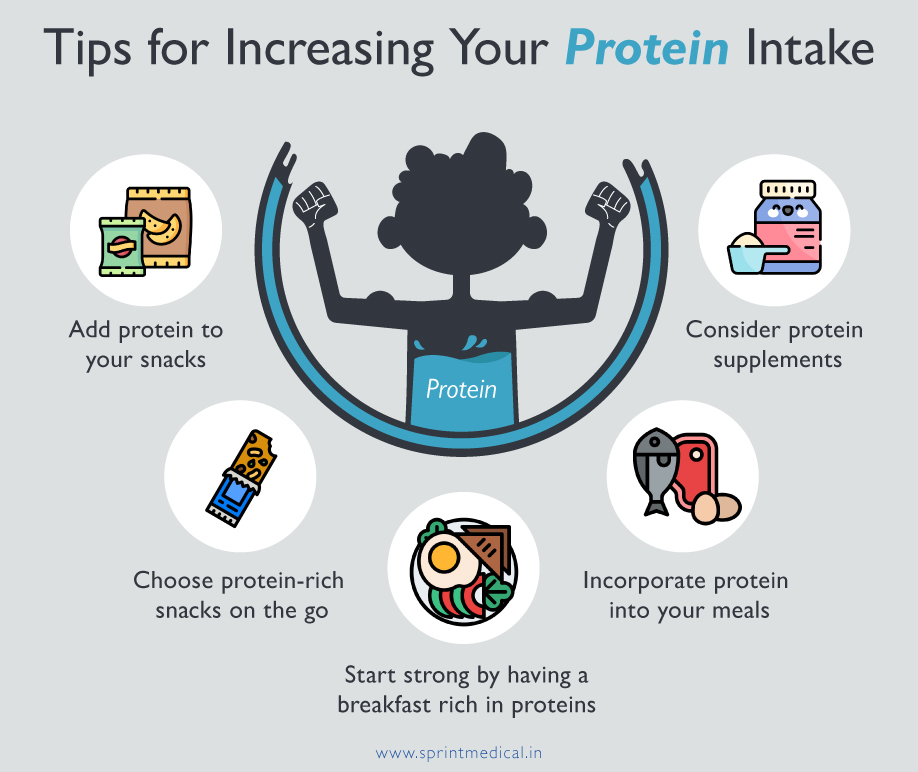⭐ Protein Deficiency: Symptoms, Causes, Types, Treatment, and Daily Protein Needs
By ENT Specialist – Dr. Sagar Rajkuwar, Nashik, Maharashtra, India
Clinic Website: www.entspecialistinnashik.com
Table of contents-
- 1)Introduction
- 2)8 Signs of Protein Deficiency
- 3)Types of Severe Protein Deficiency
- 4)Causes of Protein Deficiency
- 5)Diagnosing Protein Deficiency
- 6)The Role of Protein in the Diet
- 7)How to fulfill your protein intake?
- 8)Treatment and Prevention
- 9)How much protein do you require?
- 10)FAQ(Frequently asked questions)
- 11)✅ Conclusion
1)Introduction
A protein deficiency refers to a lack of body protein or one or more of the essential amino acids. As a result, negative nitrogen balance can also be thought of as synonymous with protein deficiency. In general, the deficiency can also be caused by a worldwide food shortage, or by other illnesses or a diet lacking in protein. Although protein-energy malnutrition is the more prevalent form of protein deficit, its symptoms are generally similar to those of kwashiorkor.


All of the amino acids and stable nitrogen required for the production of tissue proteins and nonprotein nitrogenous substances like purines and pyrimidines are provided by dietary protein. At every age, especially during growth, dietary amino acids are necessary for the production of new tissue constituents.
Amino acids that are ingested in excess of these requirements are not stored; rather, they are broken down, with the nitrogen expelled and the carbon skeleton reused. More amino acids are broken down and resynthesized in the body each day than are normally taken in through food.
Protein synthesis cannot take place unless all 20 essential amino acids are present. The diversity and versatility of these 20 unique protein building blocks account for the amazing variety of activities that proteins mediate.
Nine of the amino acids—valine, tryptophan, threonine, methionine, phenylalanine, lysine, leucine, isoleucine, and histidine—that are “essential” for human health are not produced by the body. Furthermore, arginine is crucial during infancy, and tyrosine and cysteine requirements are temporarily necessary in preterm infants.
The essential amino acid content of food proteins affects their nutritional value. This indicates that the protein intake includes enough nonessential amino acids to reduce the metabolic diversion of necessary amino acids in order to meet nonspecific nitrogen needs.
A sufficient protein intake includes all essential amino acids in enough amounts to meet maintenance requirements and provide a surplus adequate for normal growth and development. In the absence of systemic illness, serum levels of albumin and total protein are used as clinical indicators of the adequacy of protein consumption. Although animal-derived protein foods like milk, meat, fish, and eggs provide all the essential amino acids, it is important to note that some plant-based foods also provide sufficient quantities of the majority of amino acids.
Despite the widely acknowledged significance of hormonal control of protein metabolism, mounting proof suggests that dietary protein may have a regulatory effect by altering the hormonal environment, which promotes tissue accumulation. Research in both normal children and those recovering from malnutrition has demonstrated a marked rise in circulating insulin-like growth factor I linked to increased protein consumption. However, these impacts, which were observed with both animal and plant protein sources, seem to be less related to the amino acid profile of proteins. As a result, it seems that the amount of dietary protein is the primary factor in this observed reaction. The amino acid composition of dietary proteins directly influences growth by regulating the availability of amino acids at the cellular level. For protein synthesis to occur, every individual amino acid must be present during chain elongation. As a result, a protein-deficient diet lacking one or more essential amino acids will be unable to support protein synthesis. Many plant proteins include one or more limiting amino acids, such as those with lower concentrations than those found in high-quality reference proteins like milk or eggs.
It’s essential to have a well-balanced diet that includes amino acids and to know how various amino acid groupings interact with other nutrients like vitamins. For instance, a deficiency of the next most limiting amino acid may be brought on when the most limiting amino acid in a diet that is generally low in protein is increased. When supplemented to a diet that is marginal in some B vitamins, excessive amounts of some amino acids—which may or may not be limiting—may cause the vitamin deficiency to become more severe. In other instances, an amino acid may be in such excess that it decreases the use of another amino acid that is usually available in adequate amounts, leading to a deficiency.
2)8 Signs of Protein Deficiency

Some indicators and signs of protein deficiency include swelling, hair thinning, increased appetite, and more serious infections, among other symptoms.
Protein serves as one of the primary components of the body. It plays an essential role in the structure and function of muscles, skin, enzymes, and hormones.
Protein deficiency occurs when your consumption fails to meet your body’s needs.
Although actual protein deficiency is rare in the Western world, certain individuals may receive very minimal amounts from their diets. This can impact nearly all facets of body function and result in multiple health issues.
The most extreme form of protein deficiency is referred to as kwashiorkor. It most commonly manifests in children in developing nations where malnutrition and unbalanced diets are prevalent.
Signs of protein deficiency can begin to arise even when the deficiency is slight.
1. Edema


Edema is a condition marked by swollen and puffy skin. This is a typical sign of kwashiorkor.
Researchers propose it may arise from low levels of human serum albumin, the most plentiful protein in the liquid component of blood, or blood plasma.
A primary function of albumin is to sustain oncotic pressure—a force that pulls fluid into the bloodstream.
In this manner, albumin stops excessive fluid from gathering in tissues or other bodily areas. Due to decreased human serum albumin levels, severe protein deficiency results in diminished oncotic pressure. Consequently, fluid accumulates in tissues, leading to swelling.
Keep in mind that edema is a sign of severe protein deficiency, which is unlikely to arise in developed nations.
2. Fatty liver


Another indication of kwashiorkor is fatty liver, or the buildup of fat in liver cells.
Protein deficiency has been linked with fatty liver disease in developing nations. This condition can result in inflammation, liver scarring, and potentially liver failure.
The exact reason fatty liver disease arises with protein deficiency is unclear, but research indicates it may be linked to changes in the gut microbiome, mitochondria, and peroxisomal cells. This may disrupt the synthesis of fat-transporting proteins called lipoproteins.
3. Skin, hair, and nail problems


Protein deficiency may be connected with alterations in the skin, hair, and nails, which are primarily composed of protein.
For example, protein deficiency may influence hair growth and structure, potentially resulting in a hair loss condition known as telogen effluvium.
Kwashiorkor in children is also recognized by flaky or splitting skin, redness, and patches of lighter skin.
However, these symptoms are unlikely to manifest unless you experience a severe protein deficiency.
4. Loss of muscle mass


Your muscles represent your body’s largest store of protein.
When dietary protein is scarce, the body often extracts protein from skeletal muscles to maintain more crucial tissues and bodily functions. Consequently, a deficiency in protein might result in muscle wasting over time.
Even moderate protein deficiency can lead to muscle wasting, particularly in older adults.
In fact, studies indicate that adults aged 65 years and older should take in at least 0. 5 grams (g) of protein per pound (lb) of body weight, which exceeds the suggested daily allowance of 0. 36 g.
An increased intake of protein might aid in preventing sarcopenia, which refers to the gradual decline of muscle associated with aging.
5. Greater risk of bone fractures


Inadequate protein consumption might weaken your bones and elevate the likelihood of fractures.
A 2021 study revealed that participants who had a higher protein intake possessed up to 6% greater bone mineral density in their hips and spine compared to those with lower protein consumption.
After 5 years, the researchers determined that individuals who consumed more protein were less prone to experience bone fractures.
Researchers from the National Osteoporosis Foundation point out that while protein may offer certain advantages for bone health, further research is necessary to completely comprehend the connection.
6. Stunted growth in children


Lack of adequate protein may delay or inhibit growth in children.
Indeed, stunting is among the most prevalent indicators of childhood malnutrition. In 2020, over 149 million children experienced stunted growth.
Children who consistently do not receive enough protein may have a fourfold increased risk of experiencing stunted growth.
7. Increased severity of infections
A deficiency in protein may adversely affect your immune system.
For example, sufficient protein intake is crucial for the formation of antibodies. These are generated by your white blood cells to assist in combating infections.
A 2013 study involving male athletes partaking in high-intensity exercise indicated that those on a high protein diet encountered fewer upper respiratory tract infections compared to athletes following a low protein diet.
However, it is essential to highlight that additional research is warranted to fully grasp the relationship between protein deficiency and infections.
8. Greater appetite and calorie intake


Protein is vital in managing appetite and overall calorie consumption.
If your protein intake is insufficient, your body strives to improve your protein status by boosting your appetite and prompting you to seek food.
This may result in the consumption of foods rich in carbohydrates and fats to make up for the protein shortfall, a concept referred to as the protein leverage hypothesis.
Nonetheless, foods abundant in carbohydrates and fats are not as filling as high-protein options. Over time, this may cause excessive calorie intake, leading to unintended weight gain and obesity.
If you are experiencing hunger, consider incorporating high-protein foods into your diet.
3)Types of Severe Protein Deficiency
Severe protein deficiency is associated with certain conditions:
Severe protein deficiency is associated with certain conditions:
Kwashiorkor:


This condition mainly affects children who are deficient in protein despite obtaining the advised number of calories from their diet. The indicators include an increase in belly size, enhanced sensitivity, alterations in skin color and tone, and swelling. If kwashiorkor is not treated as soon as possible, it can have long-term effects that are severe.
Marasmus:


Unlike kwashiorkor, which is caused by a lack of protein, carbohydrates, and fats, marasmus is caused by a lack of all macronutrients. Because there is much less energy for the body to utilize in a day, it causes weight loss and muscle loss.
4)Causes of Protein Deficiency


Protein malnutrition symptoms can result from a variety of factors:
Insufficient Dietary Intake: A diet low in high-quality protein sources like meats, dairy products, legumes, and nuts is the root cause.
Health Conditions: Other pathophysiologic conditions include pre-existing conditions like liver, renal, or gastrointestinal disease, which may hinder a person’s ability to absorb current athletic training.
Socioeconomic Factors: Poverty and food scarcity are two of the most significant predisposing causes of global malnutrition. This sometimes highlights the fact that, although people may have an abundance of calories, they may not always have access to high-quality protein.
5)Diagnosing Protein Deficiency
A combination of physical examinations and laboratory tests is commonly used to diagnose the symptoms of protein deficiency.
Physical Examination: The physical examination indicators that the healthcare practitioners will look for include edema and muscle wasting.
Laboratory Tests: A blood sample may reveal caloric requirements, albumin, proteins, and other nutrients.
6)The Role of Protein in the Diet


Many people refer to protein as the very fabric of life, and there is strong evidence to support this. It is vital for many physiological processes, such as:
Muscle Repair and Growth: Especially when engaging in strength-training activities, you must ensure that you are consuming enough protein. It also states that active individuals and athletes require additional protein to support their workout regimens.
Hormone Production: As a result, many hormones, such as insulin and growth hormone, are proteins made up of amino acid chains. These hormones regulate a variety of bodily functions, including metabolism and physical development.
Enzymatic Functions: In biochemical processes in the human body, proteins act as catalysts and are referred to as enzyme proteins. These reactions may decrease and consequently affect well-being if the body doesn’t have enough protein.
7)How to fulfill your protein intake?


High-protein foods should be included in your diet if you want to meet your protein needs. You should aim for a balanced distribution of protein throughout the day, consuming 25 to 30 grams of these high-protein foods, such as lean meats, fish, eggs, dairy products, legumes, and nuts. You may also choose protein-rich snacks like whey protein shakes or green yogurt to meet your daily requirements more effectively.
8)Treatment and Prevention
Dietary modifications that focus on raising protein consumption are the mainstay of treatment for the symptoms of protein malnutrition.
Dietary Changes: A protein diet should include lean meats, fish, eggs, dairy products, legumes, nuts, and seeds, and it should be integrated into regular meals to promote recovery.
Supplementation: Medical professionals recommend supplementation or food enrichment in cases when dietary changes are insufficient on their own (for example, when the diet is unbalanced, as in marasmus).
Ongoing Monitoring: As a result, individuals with serious deficiencies should repeatedly see their healthcare practitioners to monitor their individual progress effectively.
9)How much protein do you require?
The quantity of protein you should intake each day may be influenced by various factors, including your age, physical activity level, and fitness aspirations.
The Dietary Guidelines for Americans 2020 to 2025Trusted Source advises that adult females should take in 46 g and adult males 52 to 56 g of protein each day. On average, this translates to 0. 36 g per lb (0. 8 g per kilogram [kg]) of body weight.
Nonetheless, studies indicate that this is the minimum necessary to avert muscle deterioration and chronic health issues.
If you aim to increase muscle mass, the International Society of Sports Nutrition suggests consuming 0. 6 to 0. 9 g per lb (1. 4 to 2 g per kg) of body weight. The authors highlight that individuals who engage in resistance training may also find it beneficial to consume up to 1. 3 g per lb (3 g per kg) of body weight.
10)FAQ(Frequently asked questions)
What occurs when your body has inadequate protein?
If your nutrition is deficient in protein, you might suffer from exhaustion, hair loss, swelling, and more serious illnesses.
What could the 5 indications of a protein deficiency be?
Five indications of protein deficiency might consist of hair loss, dry skin, higher susceptibility to infections, increased appetite, and swelling.
How can you remedy low protein levels?
The most effective method to remedy low protein levels is to consume foods rich in protein, such as oily fish, lean meats, eggs, lentils, legumes, nuts, and low-fat dairy products.
What are the primary reasons for protein deficiency?
Numerous factors can result in protein deficiency, including malnutrition, pregnancy, eating disorders, liver issues, kidney disorders, and inflammatory bowel conditions.
11)✅ Conclusion
Protein is one of the most essential nutrients needed for hormone production, immune system support, muscle mass maintenance, and the promotion of healthy growth and healing. Severe illnesses like kwashiorkor or marasmus might cause life-threatening problems, while even a minor deficiency can impair daily functioning.
Identifying the early signs, such as thinning hair, edema, a compromised immune system, muscle atrophy, and an elevated appetite, might help avoid lasting harm. Typically, a combination of a physical exam and blood tests is used to make a diagnosis, while therapy is centered around enhancing dietary intake by introducing protein-rich meals, supplements, and ongoing monitoring.
The majority of individuals can easily satisfy their daily protein needs by consuming the proper proportion of premium protein sources, such lean meats, fish, eggs, dairy products, legumes, and nuts. Adequate protein consumption is critical to good health and general well-being, regardless of whether your objectives are to maintain health, gain muscle, or avoid malnutrition..
If any patient has any ENT -Ear nose throat problems and requires any , consultation ,online consultation ,or surgery in clinic of ENT specialist Doctor Dr Sagar Rajkuwar ,he may TAKE APPOINTMENT BY CLICKING ON THE LINK GIVEN BELOW-
Clinic address of ENT SPECIALIST doctor Dr Sagar Rajkuwar-
Prabha ENT clinic, plot no 345,Saigram colony, opposite Indoline furniture Ambad link road ,Ambad ,1 km from Pathardi phata Nashik ,422010 ,Maharashtra, India-Dr Sagar Rajkuwar (MS-ENT), Cell no- 7387590194 , 9892596635
-FOR INFORMATION IN GREAT DETAIL ON Is Protein Powder Ok To Eat Every Day? PL CLICK ON THE LINK GIVEN BELOW-It Is Always Better To View Links From Laptop/Desktop Rather Than Mobile Phone As They May Not Be Seen From Mobile Phone. ,In Case Of Technical Difficulties You Need To Copy Paste This Link In Google Search. In Case If You Are Viewing This Blog From Mobile Phone You Need To Click On The Three Dots On The Right Upper Corner Of Your Mobile Screen And ENABLE DESKTOP VERSION.
-FOR INFORMATION IN GREAT DETAIL ON Who requires protein powder PL CLICK ON THE LINK GIVEN BELOW-It Is Always Better To View Links From Laptop/Desktop Rather Than Mobile Phone As They May Not Be Seen From Mobile Phone. ,In Case Of Technical Difficulties You Need To Copy Paste This Link In Google Search. In Case If You Are Viewing This Blog From Mobile Phone You Need To Click On The Three Dots On The Right Upper Corner Of Your Mobile Screen And ENABLE DESKTOP VERSION.
-FOR FURTHER INFORMATION IN GREAT DETAIL ON What is protein deficiency? PL CLICK ON THE LINK GIVEN BELOW-It is always better to view links from laptop/desktop rather than mobile phone as they may not be seen from mobile phone. ,in case of technical difficulties you need to copy paste this link in google search. In case if you are viewing this blog from mobile phone you need to click on the three dots on the right upper corner of your mobile screen and ENABLE DESKTOP VERSION
-FOR INFORMATION IN GREAT DETAIL ON Healthy Protein Shakes for Weight Gain PL CLICK ON THE LINK GIVEN BELOW-It Is Always Better To View Links From Laptop/Desktop Rather Than Mobile Phone As They May Not Be Seen From Mobile Phone. ,In Case Of Technical Difficulties You Need To Copy Paste This Link In Google Search. In Case If You Are Viewing This Blog From Mobile Phone You Need To Click On The Three Dots On The Right Upper Corner Of Your Mobile Screen And ENABLE DESKTOP VERSION.
A protein deficit occurs when your body lacks the proteins and amino acids necessary for normal function. Therefore, protein shortage and negative nitrogen balance are interchangeable phrases. protein malnutrition, which results in a protein deficit, can be caused by a protein-poor diet, a variety of diseases, or protein malnutrition in general. The most common form of protein deficiency is protein-energy malnutrition, which can lead to disorders like kwashiorkor.
Lack of protein
Amino acids are the building blocks of proteins. Your body contains approximately 10,000 different proteins. Proteins are present in every part of the body, including the hair, bones, and nails. They support the creation and upkeep of cells, which are vital for development and growth. Amino acids are the building blocks of proteins. Twenty different amino acids are necessary for the body to function effectively. The final nine, known as essential amino acids, must be derived from the protein you eat, even though it can make eleven of them. Furthermore, because amino acids cannot be stored by the body, you must replenish them often.
Dietary protein provides nitrogenous non-protein compounds like purines and pyrimidines, whereas amino acids and fixed nitrogen are necessary for the synthesis of tissue proteins. Dietary amino acids are essential for the production of fresh tissue components at all ages, but particularly during growth. Excess amino acids are broken down, the nitrogen is released, and the carbon is recycled rather than stored. The body produces more amino acids than is often acquired via food and also breaks down.
The presence of all 20 necessary amino acids is necessary for protein production to occur. The astonishing array of functions is made possible by the diversity and adaptability of the 20 distinct protein-building blocks. The nutritional worth of dietary proteins is influenced by the quantity of vital amino acids they contain. A protein shortage results from failing to get the necessary essential amino acids via nutritional supplements.
Conditions of Protein Deficiency -In Relation to Protein Deficiency?
A protein deficit primarily causes kwashiorkor, a disease. Protein shortage is a condition. Fluid retention in tissues, which results in oedema, is caused by a severe protein shortage.
Abnormally low protein levels in your blood are a symptom of hypoproteinaemia. The blood contains two main classes of proteins:
- Albumin: It aids in preventing bodily fluids from leaking out of the bloodstream.
- Globulin: It participates in the control of the liver and kidneys and aids in the creation of blood clots.
The lower levels of either or both kinds of proteins may be found by blood tests. Not all of the variables that influence the protein content of the blood are significant medical problems.
Symptoms
The symptoms of kwashiorkor include:


- edema, which is swelling in the ankles and feet
- Swollen abdomen
- Hay that is dry and easily broken
- Extreme hair loss
- Dermatitis
- An enlarged liver
- Dehydration
- A lack of desire to eat
- Fatigue
- Growth retardation
- Reduced muscle mass
- skin lesions, skin rashes, and dry skin
- Frequent illnesses
- Skin that itches
The consequences of kwashiorkor -In Relation to Protein Deficiency?
Kwashiorkor’s complications include:
- Hypoglycemia
- Hypothermia
- Electrolyte unbalance
- Breakdown of the immune system
- Delays in children’s growth and development
- liver cirrhosis
- liver failure
- Starving
- pancreatic atrophy
Protein deficiency prevention strategies
Following remedies can help avoid protein deficiency and the diseases that come with it:
- Eat protein-rich foods such as
- Seeds and nuts such as flax seeds, pistachios, cashews, and almonds
- Legumes such as lentils and beans
- Fish, seafood, and eggs
- Chicken, turkey
- Milk and other milk products
The underlying reason for the illness determines the course of therapy. Doctors suggest eating more protein in your diet if your protein levels are low due to pregnancy or malnutrition; you don’t need any medicine. The necessary medications and protein enhancer are administered when this illness is a sign of underlying kidney or liver disorders. However, the majority of cases of hypoproteinaemia are treated through dietary modifications and a nutritious diet.
In summary -In Relation to Protein Deficiency?
In summary, protein deficiency is caused by an inadequate intake of protein in the diet, and treatment is necessary based on the underlying reason. The long-term prognosis is partially determined by the causes of the protein deficiency. Proteins that aid in the treatment of the illness may be found in a variety of sources, including plants and animals.
Click on the link below to learn more about this disease.
If any patient of ENT requires any surgery, opd consultation or online consultation in clinic of ENT specialist Doctor Dr Sagar Rajkuwar ,he may contact him at the following address-
Prabha ENT clinic, plot no 345,Saigram colony, opposite Indoline furniture Ambad link road, Ambad ,1 km from Pathardi phata Nashik ,422010, Maharashtra, India-Dr Sagar Rajkuwar (MS-ENT), Cell no- 7387590194 , 9892596635
Issued in public interest by –



